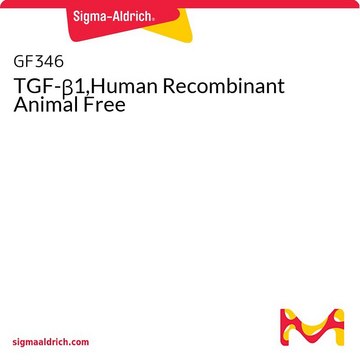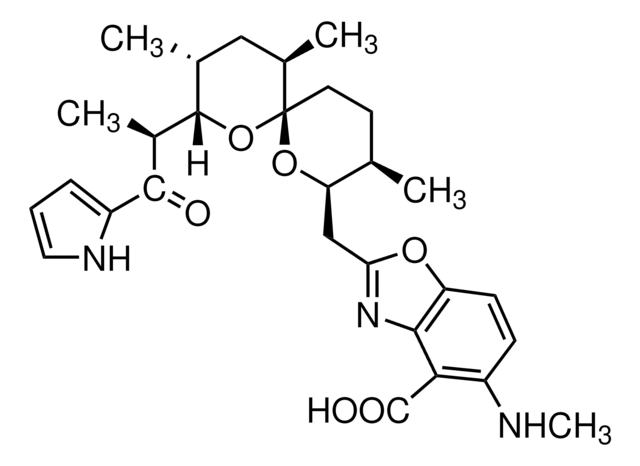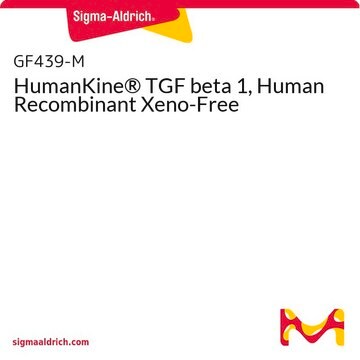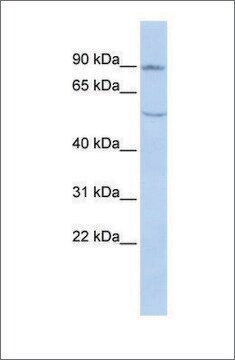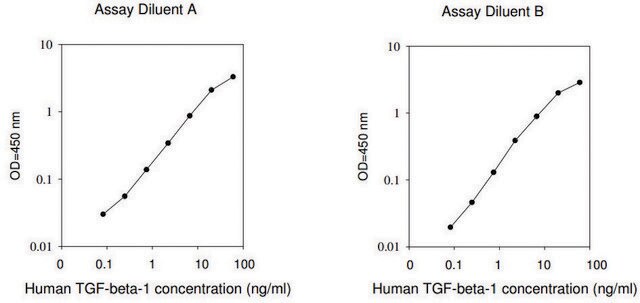Kluczowe dokumenty
T7039
Transforming Growth Factor-β1 human
≥98% (SDS-PAGE), recombinant, expressed in CHO cells, powder, suitable for cell culture
Synonim(y):
hTGF-β1, TGF-β1
About This Item
Polecane produkty
product name
Transforming Growth Factor-β1 human, TGF-β1, recombinant, expressed in CHO cells, powder, suitable for cell culture
pochodzenie biologiczne
human
Poziom jakości
rekombinowane
expressed in CHO cells
Próba
≥98% (SDS-PAGE)
Postać
powder
siła działania
≤0.05 ng/mL ED50
jakość
endotoxin tested
masa cząsteczkowa
protein 25 kDa
opakowanie
pkg of 2 μg
pkg of 50 μg
warunki przechowywania
avoid repeated freeze/thaw cycles
metody
cell culture | mammalian: suitable
zanieczyszczenia
<1 EU/μg
numer dostępu UniProt
temp. przechowywania
−20°C
informacje o genach
human ... TGFB1(7040)
Szukasz podobnych produktów? Odwiedź Przewodnik dotyczący porównywania produktów
Opis ogólny
Zastosowanie
- reporter gene assay.
- in vitro transfection.
- to study the effect of transforming growth factor-β1 (TGF-β1) on gene array analysis of renal cells.
- to study the association of TGF-β1 with shear stress-dependent upregulation of tissue inhibitor of metalloproteinase-1 in microvascular endothelial cells.
- to study the interaction between TGF-β1 activation and myofibroblast formation.
Działania biochem./fizjol.
Postać fizyczna
Komentarz do analizy
polecane
produkt podobny
produkt powiązany
Kod klasy składowania
11 - Combustible Solids
Klasa zagrożenia wodnego (WGK)
WGK 3
Temperatura zapłonu (°F)
Not applicable
Temperatura zapłonu (°C)
Not applicable
Środki ochrony indywidualnej
Eyeshields, Gloves, type N95 (US)
Certyfikaty analizy (CoA)
Poszukaj Certyfikaty analizy (CoA), wpisując numer partii/serii produktów. Numery serii i partii można znaleźć na etykiecie produktu po słowach „seria” lub „partia”.
Masz już ten produkt?
Dokumenty związane z niedawno zakupionymi produktami zostały zamieszczone w Bibliotece dokumentów.
Klienci oglądali również te produkty
Produkty
Naive pluripotent stem cells are located within the epiblast of mature blastocysts. These primitive “ground-state” cells may be cultured in vitro using specialized media and small molecule inhibitors.
Nasz zespół naukowców ma doświadczenie we wszystkich obszarach badań, w tym w naukach przyrodniczych, materiałoznawstwie, syntezie chemicznej, chromatografii, analityce i wielu innych dziedzinach.
Skontaktuj się z zespołem ds. pomocy technicznej
